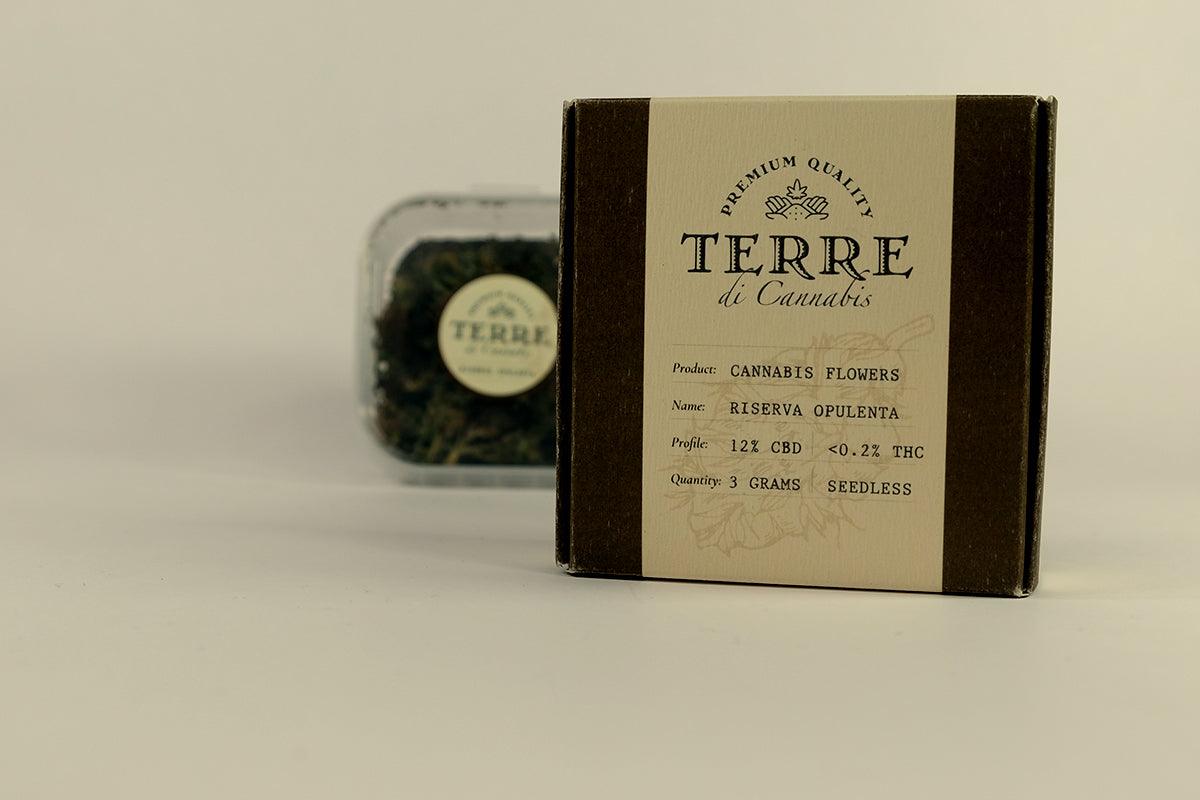A pack of light cannabis is invaded by a thousand different pieces of information. There are data from the company that markets the product, the references of those who grew it, the packaging date and - obviously - the results of the analyzes to which the inflorescences are subjected before being sold.
At the time of sale, growers must issue appropriate certification, which demonstrates that the products obtained through cultivation generally have a THC lower than 0.2%. The certification must come from an authorized analysis laboratory.
If you purchase from third party growers, the product that will be delivered must already be packaged, sealed and each bag must be accompanied by a label, which indicates the geographical area of origin of the product (or the country), the indication of the batch or of the original strain to which it belongs. In fact, if you purchased the product and packaged it subsequently there would never be certainty that no modifications or contamination had occurred and if it turned out that a certain sample had a higher percentage than the legal one, you could be subjected to criminal proceedings.
Many acronyms are often indicated on light cannabis packages, sometimes similar to the more well-known THC and CBD. These are always cannabinoids, contained in smaller percentages than THC and CBD, but present in all cannabis plants and useful in some particular cases.
What cannabinoids are contained in cannabis light?
CBD
The best known of the cannabinoids is cannabidiol, or CBD, which - unlike THC - has no psychoactive effects. On the other hand, it is rich in beneficial properties, which make it extremely popular in medicine for the treatment of many pathologies. CBD is the most studied of the cannabinoid compounds and the applications are exceptionally broad.
It can be used as a potential treatment for:
- Everyday aches and pains (sports injuries, bumps and bruises, etc.)
- Chronic pain
- Inflammatory conditions including arthritis
- Anxiety and panic disorders
- Nausea and vomit
- Attacks, convulsions and convulsive disorders
- Skin conditions such as acne, rashes and eczema
THE CBDA
Cannabidiolic acid, or CBDA, is the acidic form of CBD, is a cannabinoid produced by the stems, leaves and flowers of some cannabis plants. CBD and CBDA share similar molecular structures, and their therapeutic effects are also similar, although CBDA has been less studied than its bigger brother. CBDA has been found to act primarily as an inhibitor of the COX-2 enzyme in the endocannabinoid system, with positive effects on inflammatory states. In addition to this, CBDA appears to be an excellent antiemetic.
THE CBN
CBN is short for cannabinol, famous for being the first cannabinoid isolated by scientists. CBN is produced when THC is heated or exposed to oxygen; it also occurs naturally as the cannabis plant ages. Although CBN is derived from THC, it does not share its psychoactive effects.
CBN binds to the receptors of the endocannabinoid system less effectively than its other colleagues. However, it appears to have huge potential in improving sleep health. Scientists have found that CBN works as a powerful sedative, with effects comparable to those of drugs used to combat insomnia.
CBN appears to be a potential stimulator of bone tissue growth: according to research, CBN can activate stem cells that facilitate the production of new bone tissue.
It also has analgesic, antibiotic, anti-convulsant and anti-inflammatory properties.
THE CBG
CBG, short for cannabigerol, is also a non-psychoactive cannabinoid with a number of promising medical applications.
It is not very present in the cannabis plant, it is often contained in quantities lower than 1%. Despite this, CBG binds with the CB1 and CB2 receptors in the endocannabinoid system and when it does, dopamine levels increase, helping to regulate sleep, mood and appetite. CBG is also believed to block serotonin receptors, which has positive implications for treating anxiety and depression.
CBG has also been studied as a potential treatment for inflammatory bowel disease, nerve cell degeneration, appetite stimulation, and bladder dysfunction.
The CBCs
Discovered more than fifty years ago, cannabichromes are considered one of the most promising cannabinoids in recent medical research. They are released by exposure to CBDA heat and are considered promising by scientific research, thanks to their pain-relieving potential.
CBC binds to TRPV1 and TRPA1 receptors, which are linked to pain perception. This means that CBC can work as an alternative to traditional painkillers such as NSAIDs, but without their potentially harmful side effects.
THE CBDV
Cannabidivarin, better known as CBDV, is a compound that is structurally very similar to CBD and is valuable in the treatment of neurological disorders.
Used as an anticonvulsant and antiepileptic, CBDV may be able to help patients suffering from epilepsy and Parkinson's disease. In addition to reducing the duration and intensity of seizures, CBDV may work to prevent seizures. It is also an excellent antiemetic, works as an appetite suppressant and relieves the symptoms of Crohn's disease and multiple sclerosis.
How do I know which cannabinoid I need?
Many of the cannabinoids indicated in the previous list are contained in very small percentages within a cannabis plant and are often not found on the market in their isolated version. However, they are associated with CBD in some targeted formulations, useful for the treatment of this or that disorder. We must learn to recognize cannabinoids and choose inflorescences that contain more CBGA or more CBC, carefully studying the labels. In any case, CBD has a very wide range of effects, and includes almost all the properties of the other cannabinoids listed above.
Other readers also found the following article interesting:







